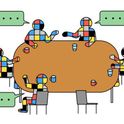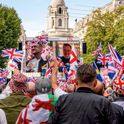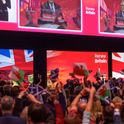With its gory imagery on the front page of every British newspaper, the Woolwich attack has provoked shock and anger. Though it did not involve the same level of casualties and damage that we associate with terrorism, it was clearly motivated by Al Qaeda-inspired ideology, and aimed to upset and frighten. Yet despite consistency with previous acts of Al Qaeda-inspired terrorism, the Woolwich attack suggests an important shift in objectives, with critical implications for counterterrorism responses.
It’s been reported that the attacker claimed he “wanted to start a war in London tonight.” Just as 9/11 provoked the US into a response that provided further evidence of a “war against Islam,” the Woolwich attack appears aimed at provoking a similar “war” on the streets of London and in cities throughout the UK. On one side, those who sympathise with the attackers; on the other, far-right groups, and perhaps the broader white British community. One look at Twitter and the events following the attack—the English Defence League (EDL) demonstration in Woolwich town centre, attacks on mosques in Kent and Essex—makes it easy to conclude that community tensions are running high.
For the potential sympathisers out there, the Woolwich attack is far easier to justify and defend than the Boston bombings. No murder is ever justified, but a soldier is clearly a more legitimate target than a child. The murderer’s apology for “women having to witness the murder” also seemed pitched to portray the attack as governed by a bizarre morality. On Twitter, less than a day after the murder, many openly described the murderers as “heroes,” “hard” and “brave.” An act of terrorism must be gruesome enough to inspire fear and terror, but not so gruesome as to alienate its potential supporters and sympathisers.
Targeting a soldier is bound to incite far-right groups and the (largely working-class) communities that servicemen and women come from. The EDL, like other far-right groups, lionises the country’s servicemen and women. Our Demos survey of 13,000 far-right supporters across Europe suggests that supporters of such groups have above-average levels of trust in the armed forces. It’s also well known that the militant patriotism of far-right groups, like the EDL, often appeals to ex-soldiers and many can be seen in their ranks.
The imagery here is crucial. For those pockets of Britain where racism and fear of ethnic minorities remain, yesterday’s front pages of the bloody-handed, cleaver-wielding murderer showed their bogeyman come to life.
Social media brings it all together in the worst possible way. Within hours, the EDL had organised to put “feet on the streets” of Woolwich, menacingly masked in logoed balaclavas. Further protests are planned for Saturday. On Twitter, openly racist, violent comments and death threats fly back and forth between the EDL and its sympathisers and young Muslims. A rise in anti-Islamic sentiment and attacks on Muslims is inevitable. Young Muslim men are likely to respond with their own attacks. This so-called “reciprocal radicalisation” is the new fear—but importantly, it is also the new objective of such attacks.
This has important implications for how we respond. The government’s CONTEST counter-terrorism strategy was designed for a 9/11 and 7/7 world: bomb-proofing buildings and coordinating rescue efforts. However, the large-scale damage intended by the Woolwich attack was not the act itself, but its aftermath: the potential further division and violence between Britain’s white and Muslim communities.
Terror’s new aftermath thus becomes less about emergency services, and more about civic associations and community leaders: less pulling people from the rubble and more pulling different communities together. The relationship between terrorism and integration was always discussed in the context of preventing terrorism. In the wake of Woolwich, it now needs to be prioritised when responding to terrorism.
After Woolwich
Tensions are running high—just as the attackers planned
May 24, 2013

© Gavin Lynn











